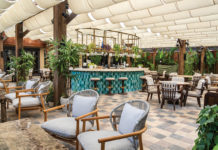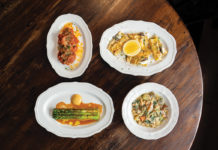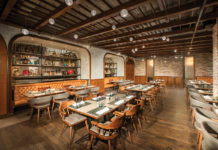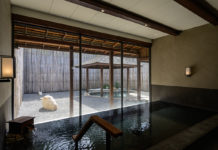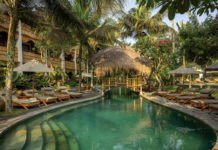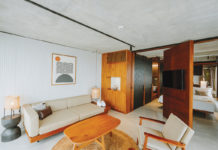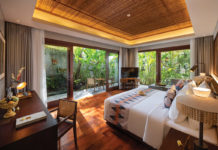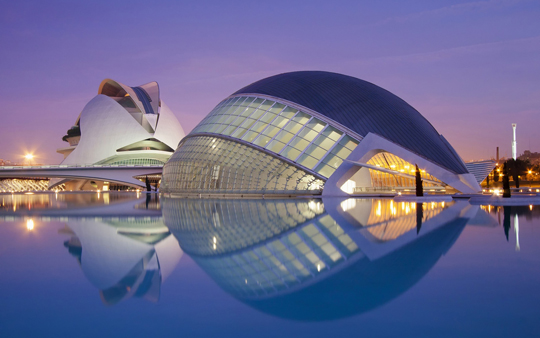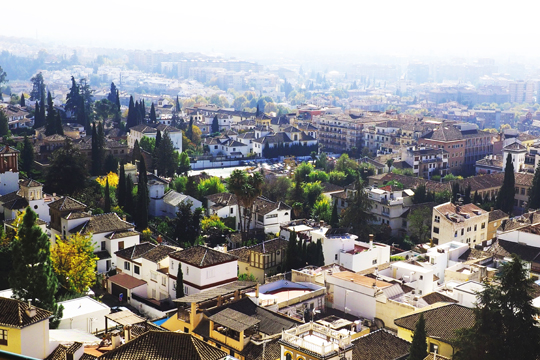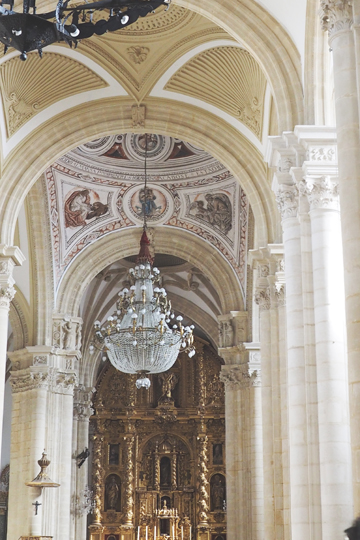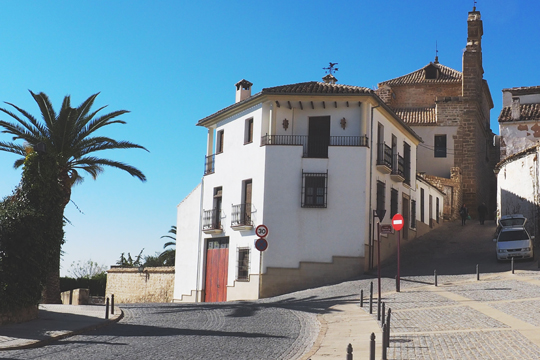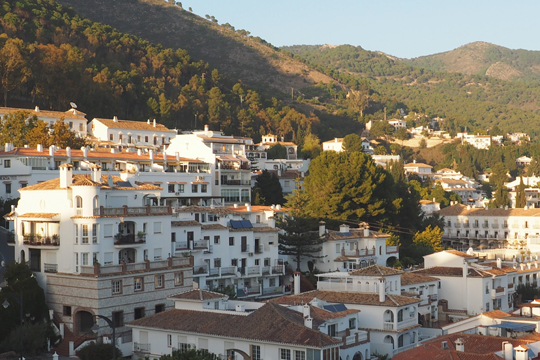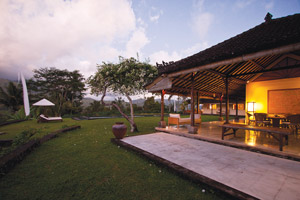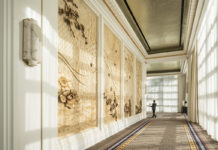Valencia
My journey to Spain began on its beautiful coastline when I landed in Valencia, the country’s third largest city. Its breathtaking futuristic skyline is built upon some of the oldest Spanish traditions and offers vibrant modern excitement along with charming Old World cultural delights.
My first stop was at BioParc Valencia, a park that is home to exotic animals from all over the world. Unlike traditional zoos that employ bars and cages to enclose animals, I was able to see these majestic creatures from behind the safety of natural barriers like rock outcroppings and streams for an eco-conscious experience. Afterwards, I visited Mestalla Stadium where many legendary football matches have transpired. I was able to tour the facility and see firsthand what goes on behind the scenes of Europe’s most popular sport.
For some excitement and an enlightening experience, I took a break from the city’s sun-soaked beaches and paid a visit to the Historical City Centre where Valencian history is on full display. Founded by the Romans in the year 138 BC, the city has deep historical roots; I found evidence of each major historic period just by observing the architecture of various buildings with a talented guide. As part of this trek through time, I then had the opportunity to view the tall spires of the Cathedral Complex that tell tales of kingdoms and conquests and inside I chanced a rare look at what many believe to be the true Holy Grail.
At night, I had the opportunity to do a little shopping downtown before a fabulous dinner at Restaurante Quintana, an exclusive address that serves delectable local food in an intimate setting. The birthplace of the cherished dish, Paella, Valencian cuisine couldn’t be more unique, or more delightful, especially when enjoyed either in world class restaurants, or quaint cafes facing the sea. I even had the opportunity to learn from old masters at Escuela de Arroces y Paella Valenciana, observing the secrets of the creation of such a fabulous dish.
Before I had to move on, I visited the most famous attraction in all of Valencia, the futuristically designed City of Arts and Sciences. I was amazed strolling through this immense complex that includes many astonishingly designed architectural achievements that house centers of interactive learning. The most recognizable of these is L’Hemisfèric – a planetarium, cinema and laserium in the shape of a half-sphere. The clear waters of a pool surround the structure and reflect the appearance of L’Hemisfèric, making the two images appear together as an enormous eye. As this building was intended to represent the eye of knowledge, I was certainly enlightened by its breathtaking design.
Granada
On the next stop in my Spanish adventure, I had the pleasure of traveling to the most popular tourist hub in all of Spain: Granada. This city is a Spanish jewel and boasts a variety of cultural interests, ancient monuments, a vibrant nightlife and many opportunities for adventure in the nearby Sierra Nevada Mountains.
The most unforgettable moment of my visit was being able to explore Alhambra, the most famous attraction in Granada. This antiquated Moorish fortress towers over the treetops on the surrounding green hills. Since only a limited amount of visitors are allowed at a time, and sometimes people have had to buy their tickets months in advance, I was uniquely lucky to experience this site. Within its looming ramparts, Alhambra contains a lavish palace complex adorned with fantastically intricate artwork and architecture. Alabaster fountains serve as the centerpieces of carefully manicured gardens and fill the grounds with the joyful sound of rushing water. I found myself spending hours marveling over this site and realized that is truly emblematic of a divine palace of paradise come to Earth.
Afterward I was able to make an average night into an exhilarating escape. Granada is home to captivating flamenco dancers whose unique style serve as a symbol for a culture. I treated myself to an engrossing show and although I didn’t partake, lessons are widely available and are sure to lead to an energetic and enlightening experience.
Cordoba
After boarding at the platform to Cordoba I enjoyed a romantic trainride through the Spanish countryside. Occupying the south of Spain and a unique corner of Spanish history, Cordoba filled me with wonder with its unique blend of cultures and experiences to sample. Conquered by Islamic forces in the eighth century, the city became the seat of Muslim power and a center for advanced knowledge and learning. Today, the remnants of past civilizations offer a window to a rich past and attract visitors from the world over.
After my arrival, I explored the hills surrounding Cordoba that house the ruins of the city of Medina Azahara, a vast fortified city of the caliphs who ruled this land long ago. Complete with a royal palace, gardens, residences, mosques and grand reception rooms, much of the stonework remains intact where it was first laid in the first century. It was amazing to see this preserved relic from another era.
On my way back to the city I was treated to lunch and a true tasting of local gastronomy at the Bandolero Restaurant. This mix of cultures is evident in each dish as the melding of these cuisines produced wonderful sensations for me to experience.
Next I went to see another prize from Cordoba’s vibrant past, found at The Royal Stables where monarch Felipe II decreed the creation of the pure Spanish thoroughbred. Here I witnessed an equestrian tradition that goes back to that very decree in 1570 and a riding style that has enriched a culture, even centuries before, during a riding show complete with spectacular athleticism and equine skill.
Baeza
My journey then took me to the city of Baeza, widely known as the best place to see Renaissance architecture in Spain. Indeed the high walls of fantastic stone masonry that line narrow cobbled streets took me on a trip through time.
Aside from the spectacular sights and scenery, I saw during my stay that the city had much more to offer. I ventured to a compound named Hacienda La Laguna. There, at the heart of olive country, I was able to tour an olive oil factory and learn of its cultivation and its history. A mainstay of the Mediterranean diet, olive oil unites the diverse region with a rich cuisine. At the center of an immense plantation dating back centuries, I was led on a guided tour that revealed the secrets of olive oil production even down to the cultivation of the original olives. This was then followed by an elegant tasting event to complete the experience. I couldn’t imagine a more enlightening, or delicious cultural immersion.
Ubeda
Surrounded by picturesque rolling hills covered with countless olive trees, I was then able to visit the unforgettable city of Ubeda. Upon my arrival I took a relaxing stroll through its historic center that revealed many wonderful cafes and restaurants resting between looming medieval fortifications and expressions of artful architecture from the past.
Among the many historic sites I visited, the marvelous Hospital do Santiago Palace is certainly worth seeing. This former hospital was built in the 1500s and features vaulted ceilings, expansive balconies and beautiful staircases. Virtually unchanged since its construction, this site’s square towers and marble columns harken back to Renaissance masters.
For lunch I had the pleasure to dine at the Zeitum Restaurant, which offered many traditional favourites, also deeply rooted in the tradition of olive oil. The intoxicating atmosphere combined with the terrific food had me wishing that I had just one more day in this city so that I could come back.
It was easy for me to see that the arts abound in this city. Not far from the city’s center I witnessed local craftsmen practise the ancient art of Arabic pottery. Unique to this area of Spain, traditions are passed from generation to generation to produce beautiful pieces with intricate details and embellishments such as oil containers, earthenware jugs and tea sets, all glazed with vibrant colors. I perused the fantastic Paco Tito Pottery Museum that showcases some of the most remarkable works of this complicated art form.
Malaga
Unfortunately my extraordinary journey had to come to an end. Although it was sad to leave, I was glad that I had an opportunity to visit the lovely city of Malaga first. Drenched by the sun on the southern shores of Spain, beautiful beaches line Malaga’s coasts, while inland, fantastic shopping and dining can be found on every street.
Malaga is also the birthplace of famed Spanish artist Pablo Picasso. One of the most influential minds of the 20th Century, Picasso pioneered many different revolutionary artistic styles and his creations can be seen in museums around the world. I had the unique experience to see his birthplace and childhood home, where, according to his mother, the fabled artist said his first word: “pencil”, and received sketching lessons from his father. Here I experienced a guided tour illuminating Picasso’s life that featured some of his rarely seen childhood paintings. Afterwards I visited the city’s famous art museum that is dedicated to Pablo Picasso and features exclusive exhibitions that cannot be seen anywhere else.
After that, I had a chance to explore the neighbouring Mijas Village and was able to experience the burro-taxi. This phenomenon is also known as the “donkey taxi” and allowed me to get a glimpse into local culture while riding on top of a donkey, complete with an ornate bridle handmade by his local handler. Dismounting from my “taxi”, I then enjoyed a farewell dinner at Museo del Vina de Mijas. This fantastic restaurant, as its Spanish name implies, is a tribute to the winemakers of the city’s past. Here I was treated to a singular winetasting experience coupled with a simply fabulous meal. My dinner, like the rest of my trip, was certainly an unforgettable experience – I simply cannot wait to return.


